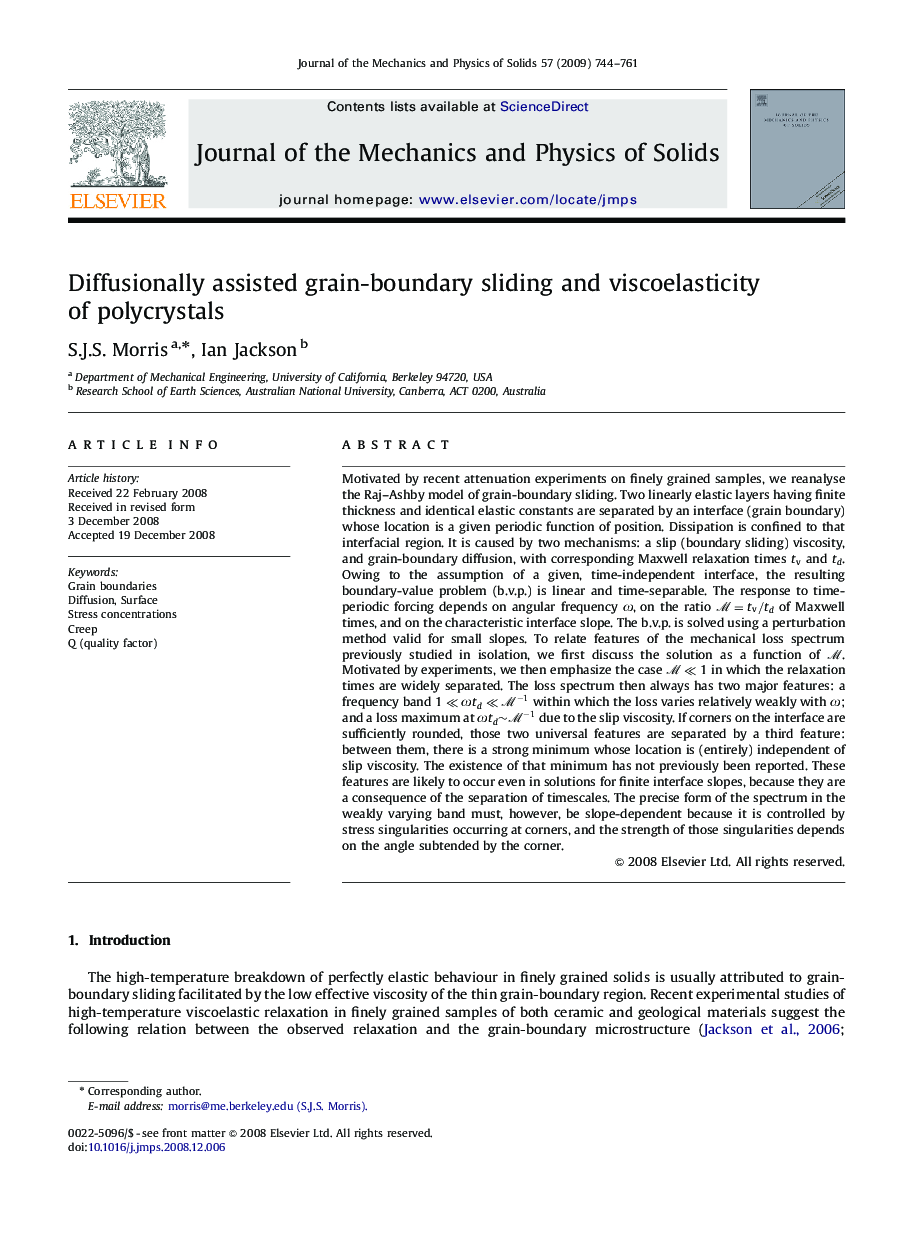| کد مقاله | کد نشریه | سال انتشار | مقاله انگلیسی | نسخه تمام متن |
|---|---|---|---|---|
| 797409 | 1467138 | 2009 | 18 صفحه PDF | دانلود رایگان |

Motivated by recent attenuation experiments on finely grained samples, we reanalyse the Raj–Ashby model of grain-boundary sliding. Two linearly elastic layers having finite thickness and identical elastic constants are separated by an interface (grain boundary) whose location is a given periodic function of position. Dissipation is confined to that interfacial region. It is caused by two mechanisms: a slip (boundary sliding) viscosity, and grain-boundary diffusion, with corresponding Maxwell relaxation times tvtv and tdtd. Owing to the assumption of a given, time-independent interface, the resulting boundary-value problem (b.v.p.) is linear and time-separable. The response to time-periodic forcing depends on angular frequency ωω, on the ratio M=tv/tdM=tv/td of Maxwell times, and on the characteristic interface slope. The b.v.p. is solved using a perturbation method valid for small slopes. To relate features of the mechanical loss spectrum previously studied in isolation, we first discuss the solution as a function of MM. Motivated by experiments, we then emphasize the case M≪1M≪1 in which the relaxation times are widely separated. The loss spectrum then always has two major features: a frequency band 1≪ωtd≪M-11≪ωtd≪M-1 within which the loss varies relatively weakly with ωω; and a loss maximum at ωtd∼M-1ωtd∼M-1 due to the slip viscosity. If corners on the interface are sufficiently rounded, those two universal features are separated by a third feature: between them, there is a strong minimum whose location is (entirely) independent of slip viscosity. The existence of that minimum has not previously been reported. These features are likely to occur even in solutions for finite interface slopes, because they are a consequence of the separation of timescales. The precise form of the spectrum in the weakly varying band must, however, be slope-dependent because it is controlled by stress singularities occurring at corners, and the strength of those singularities depends on the angle subtended by the corner.
Journal: Journal of the Mechanics and Physics of Solids - Volume 57, Issue 4, April 2009, Pages 744–761